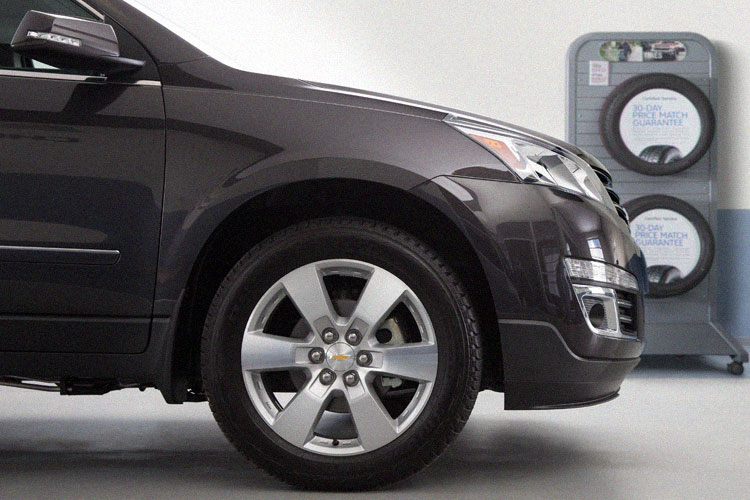
“A vehicle is only as useful as the tires it sits on.” I’m sure if automobiles were around in 500 B.C. that would be an ancient Chinese proverb. With the exception of the engine and brakes, few automotive components affect your vehicle’s performance more than your set of tires, which means it’s vital to ensure that they’re kept in good condition and replaced as soon as they’ve become worn. Aside from propelling you forward, tires play a substantial role in your vehicle’s traction and braking. It doesn’t matter if your vehicle has an advanced all-wheel drive system when you’re running on flats – you’re still going to slide in wet road conditions. So without further ado, here are some tips on how to maintain your tires, as well as how to inspect whether or not you’re due for a new set.
- Make sure your tires are consistently inflated to the recommended levels your vehicle requires. You can find your vehicle’s optimal tire pressure either in the owner’s manual or on the white sticker inside your driver’s side door frame. Underinflated tires create more stress on your engine to propel them, and result in poorer fuel economy. Over inflated tires will cause uneven wear on the tread, as well as increase their chance of exploding on contact with a foreign object at highway speeds.
- If possible, avoid damaged roads on your daily commute. If you have an option of which route to take, opt for the newer road with less potholes or loose gravel.
- Get in the habit of having your tires rotated every 6000 to 8000 miles. An easy way to remember this is to just get it done every time you take your vehicle to Jerry’s Toyota for an oil change. The Jerry’s It’s About You Loyalty Program includes tire rotations for LIFE! If you regularly service your vehicle at our Baltimore Toyota certified repair facility, you’ll never have to worry about this step!
- If one of your tires goes flat, be sure to drive on your spare as little as possible. Spare tires aren’t meant to be ridden on long, and will contribute to uneven tread wear on your other tires due to the imbalance they cause.
- Never replace tires one or two at a time if the others are significantly used. This will result in uneven tread and traction between different tires in various stages of their lifespan.
- Don’t do burnouts in the super-market parking lot! Save that for your next airport rental car.
If you do suspect that your tires are beginning to become worn, here are some warning signs to look out for:
- Your vehicle’s ride is harsher than you remember. You feel the bumps in the road more, and there’s more road noise.
- Your vehicle’s handling in inclement weather has noticeable degraded. You feel yourself slipping around turns.
- Your tires have uneven tread, balding edges, or visible wiring.
Maryland state inspections require all tires to measure at least 2/32 of an inch to pass. Besides taking your vehicle to a mechanic or purchasing a tire depth gauge, there’s a really simple trick to tell whether or not you need new tires, and it only costs a penny! Simply locate a spot on your tire where the tread appears to be the shallowest. Insert the penny with Lincoln’s head first into the tread. If you can see the top of Abe’s head, your tread is too shallow and you should seriously consider new tires. Lucky for you, Jerry’s Chevrolet stocks a variety of premium tire brands including Bridgestone, Michelin, and Goodyear. Best of all, we are willing to match the prices of our competitors for identical tires!





